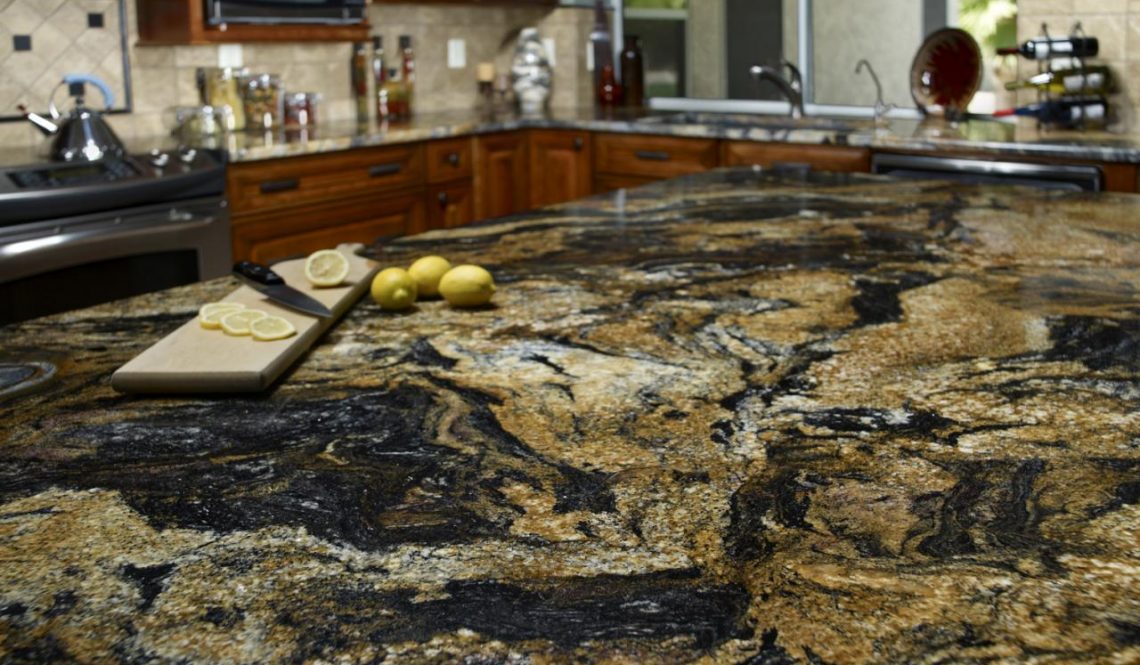
How to Clean Different Types of Countertops
Cleaning methods for bathroom or kitchen counters vary depending on whether you have laminate, wood, glass or granite countertops in your home.
Knowing how to keep surfaces spotless and prevent stains — as well as sealing certain materials can help countertops look better and last longer. Caring for your countertops will be simple if you follow this guide.
Granite Countertops
- Clean: Wipe and rinse with warm, soapy water. Avoid abrasive cleansers that may cause scratches.
- Remove stains: Apply a baking soda paste, cover it with plastic wrap, then let it sit overnight. Wipe up with warm water and a soft cloth.
- Seal: Use the water droplet test to determine when to reseal. Leave a few drops of water on your counter. If the droplet stays on the surface after 15 minutes, no resealing is needed. If the drops spread and leave a dark mark on the stone after you blot off the excess, apply a product formulated for stone.
Marble Countertops
- Clean: Wipe with a damp soft cloth, then dry with a clean cloth to prevent streaking and water spots from forming. Use pH-neutral dishwashing liquid mixed with warm water for deeper cleans.
- Remove stains: Immediately blot acidic liquids such as wine, orange juice, tomatoes or soft drinks, as they can permanently etch marble surfaces. Etched marble may require professional buffing.
- Seal: Use the water droplet test described for granite. If it fails, use a product formulated for marble’s porous surface.
Laminate Countertops
- Clean: Wipe with warm soapy water, a mild bleach solution or a non-abrasive kitchen cleaner. Test bleach in an inconspicuous spot first, as it may stain or cause surface damage.
- Remove stains: Let a baking soda paste sit on a surface stain for a few minutes, then wipe it up and rinse with water. To remove grease buildup, use a kitchen cleaner or a vinegar and water solution.
- Seal: No sealing is needed.
Tile Countertops
- Clean: Use a non-abrasive multi-purpose cleaner, as soap may leave behind a film. Adding white vinegar to water may help reduce this residue.
- Remove stains: Clean stained grout using a toothbrush and mildew-fighting cleaner or bleach diluted with water.
- Seal: Seal unglazed tile and grout and recaulk with mildew-resistant silicone products at least every other year. Glazed ceramic tile doesn’t require sealing.
Glass Countertops
- Clean: Spray glass or multi-purpose cleaners onto a soft cloth or sponge rather than applying directly onto the surface to reduce dirt and grime buildup. Avoid using abrasive cleaners and scratchy cleaning tools.
- Remove stains: Glass doesn’t stain, but you can scrub stuck-on grime with dishwashing detergent and hot water.
- Seal: No sealing is needed.
Butcher Block Countertops
- Clean: Spray dedicated wood cleaner onto a sponge rather than applying it directly to the surface. Avoid using bleach and abrasive cleaners, as they can cause damage.
- Remove stains: Apply a mixture of one teaspoon vinegar per ¼ cup water with a sponge. Sand out small burns, cuts and scratches.
- Seal: Rub with tung or mineral oil each month or at least quarterly to keep wood from drying out. Wipe up excess oil that doesn’t soak in to prevent the surface from becoming tacky and attracting dirt.
- Clean: Remove smudges with stainless steel cleaners. Soap and water also works, but spots may appear if you let the water sit for too long.
- Remove stains: True to its name, stainless steel resists stains, however it’s susceptible to rust marks from metal scouring pads, cast-iron pans and other rust-prone objects. To remove rust marks, use a mild abrasive cleanser or a homemade lemon juice and baking soda paste.
- Seal: No sealing is needed.
(As seen on Angieslist.com)
